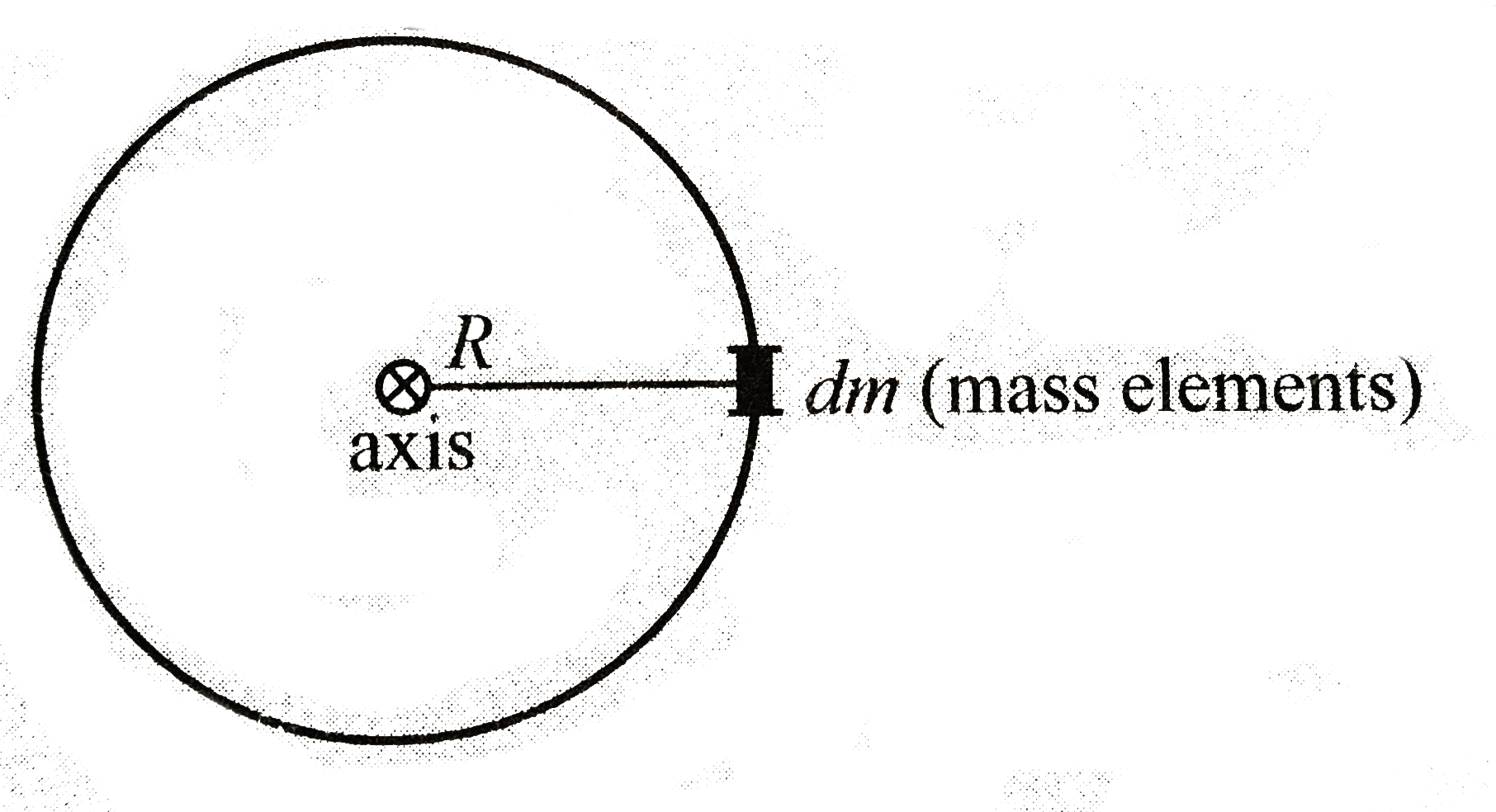A charge q is unifomly distrybuted over a nonconducting ring of radius R. The ring is rotated about an axis passing through its centre and perpendicular to the plane of the ring with frequency f. The ratio of electric potential to the magnetic field at the centre of the ring depends on.
q,f,andR
qandfonly
fandR
f
The correct Answer is:D
To solve the problem, we need to find the ratio of electric potential (V) to the magnetic field (B) at the center of a non-conducting ring with a uniformly distributed charge q that is rotating with a frequency f.
1. Determine the Electric Potential (V) at the Center of the Ring:
The electric potential V at the center of a ring with charge q uniformly distributed over it and radius R is given by the formula:
V=kqR
where k is Coulomb's constant.
2. Determine the Magnetic Field (B) at the Center of the Ring:
When the ring rotates with frequency f, it creates a current I. The current can be expressed as:
I=qT=qf
where T is the period of rotation, and f is the frequency. The magnetic field B at the center of the ring is given by:
B=μ0I2R
Substituting I into the equation:
B=μ0(qf)2R
3. Find the Ratio of Electric Potential to Magnetic Field:
Now, we need to find the ratio VB:
VB=kqRμ0(qf)2R
Simplifying this expression:
VB=kqR⋅2Rμ0(qf)=2kμ0f
Here, the R and q terms cancel out.
4. Conclusion:
The ratio VB depends on the constants k and μ0, and the frequency f. It does not depend on the radius R or the charge q.
Final Answer:
The ratio of electric potential to the magnetic field at the center of the ring depends on f.
The electric potential V at the center of a ring with charge q uniformly distributed over it and radius R is given by the formula:
V=kqR
where k is Coulomb's constant.
When the ring rotates with frequency f, it creates a current I. The current can be expressed as:
I=qT=qf
where T is the period of rotation, and f is the frequency. The magnetic field B at the center of the ring is given by:
B=μ0I2R
Substituting I into the equation:
B=μ0(qf)2R
Now, we need to find the ratio VB:
VB=kqRμ0(qf)2R
Simplifying this expression:
VB=kqR⋅2Rμ0(qf)=2kμ0f
Here, the R and q terms cancel out.
The ratio VB depends on the constants k and μ0, and the frequency f. It does not depend on the radius R or the charge q.
The ratio of electric potential to the magnetic field at the center of the ring depends on f.
Topper's Solved these Questions
- MAGNETIC EFFECT OF CURRENT AND MAGNETISMBOOK - DC PANDEY ENGLISHCHAPTER - MAGNETIC EFFECT OF CURRENT AND MAGNETISMEXERCISE - Only One Option is Correct
45 Videos
- MAGNETIC EFFECT OF CURRENT AND MAGNETISMBOOK - DC PANDEY ENGLISHCHAPTER - MAGNETIC EFFECT OF CURRENT AND MAGNETISMEXERCISE - More than One Option is Correct
25 Videos
- LAWS OF THERMODYNAMICSBOOK - DC PANDEY ENGLISHCHAPTER - LAWS OF THERMODYNAMICSEXERCISE - Level 2 Subjective
18 Videos
- MEASUREMENT AND ERRORSBOOK - DC PANDEY ENGLISHCHAPTER - MEASUREMENT AND ERRORSEXERCISE - Subjective
19 Videos
Similar Questions
Moment of inertia of a ring of mass M and radius R about an axis passing through the centre and perpendicular to the plane is
View SolutionCharge q is uniformly distributed over a thin half ring of radius R. The electric field at the centre of the ring is
View SolutionA ring of mass m and radius r rotates about an axis passing through its centre and perpendicular to its plane with angular velocity ω. Its kinetic energy is
View SolutionCalculate the moment of inertia of a ring of mass 2kg and radius 2cm about an axis passing through its centre and perpendicular to its surface.
View SolutionCalculate the moment of inertia of a ring of mass 2kg and radius 2cm about an axis passing through its centre and perpendicular to its surface.
View SolutionCalculate the moment of inertia of a ring having mass M, radius Rand having uniform mass distribution about an axis passing through the centre of the ring and perpendicular to the plane of the ring?

View SolutionThe moment of inertia of a circular ring of mass 1 kg about an axis passing through its centre and perpendicular to its plane is 4 kg m2. The diameter of the ring is
View SolutionA charge q is uniformly distributed over a quarter circular ring of radius r. The magnitude of electric field strength at the centre of the ring will be
View SolutionThe ratio of radii of gyration of a circular ring and a circular disc, of the same mass and radius about an axis passing through their centres and perpendicular to their planes are
View SolutionThe moment of inertia of a uniform ring about an axis passing through its centre and perpendicular to its plane is 100kgm2. What is the moment of inertia of the ring about its diameter ?
View Solution
